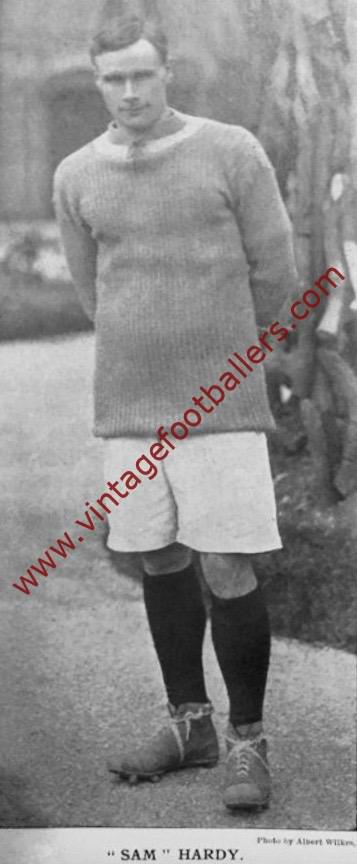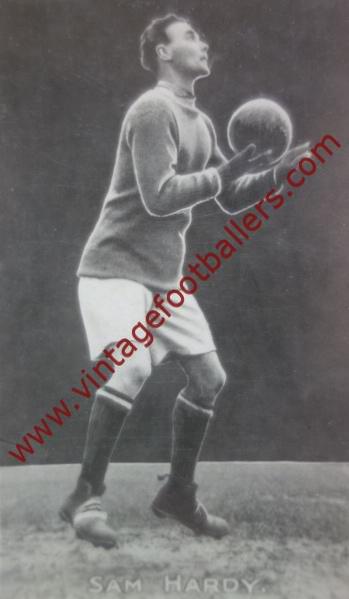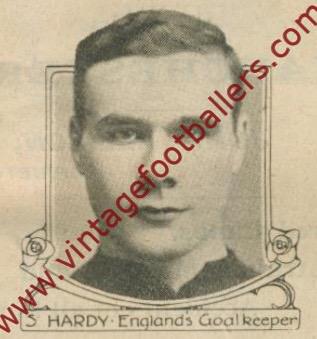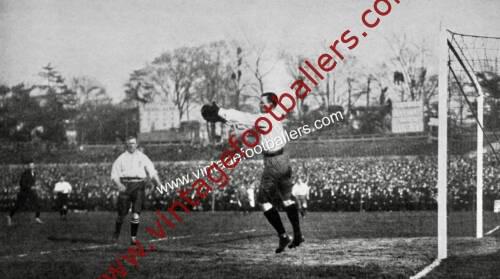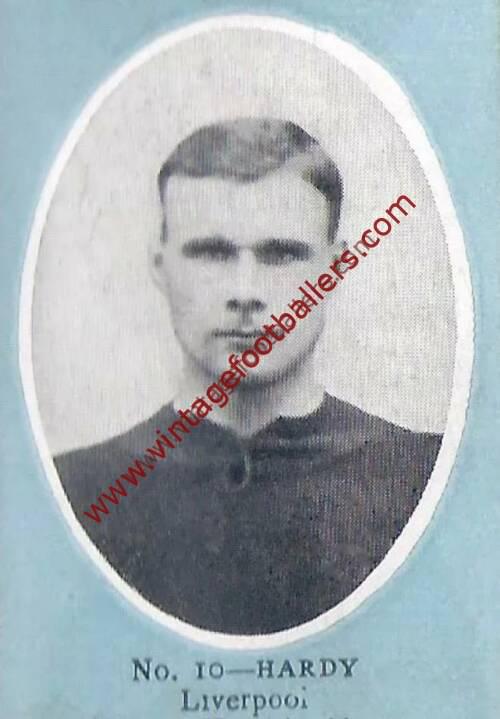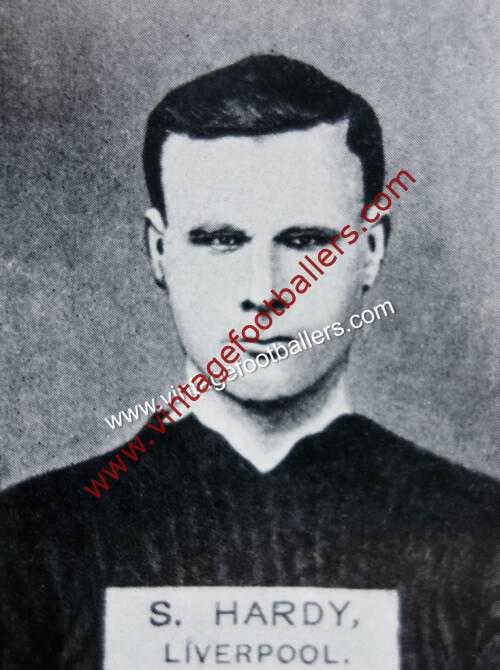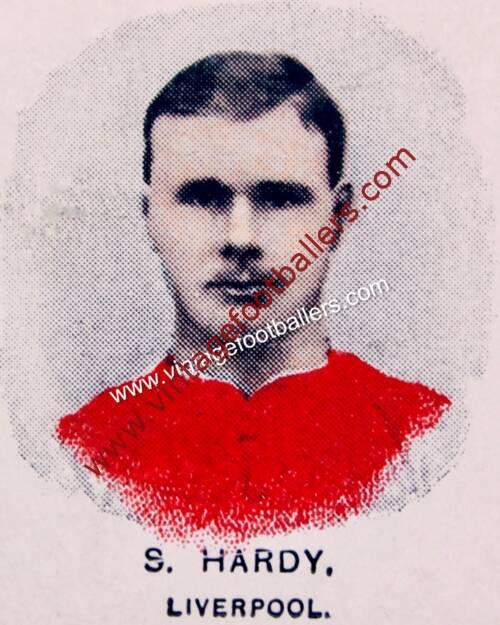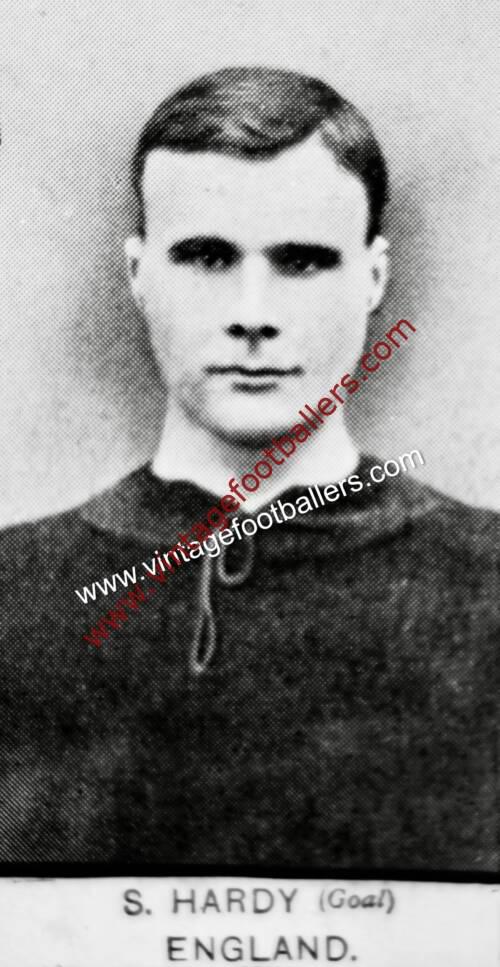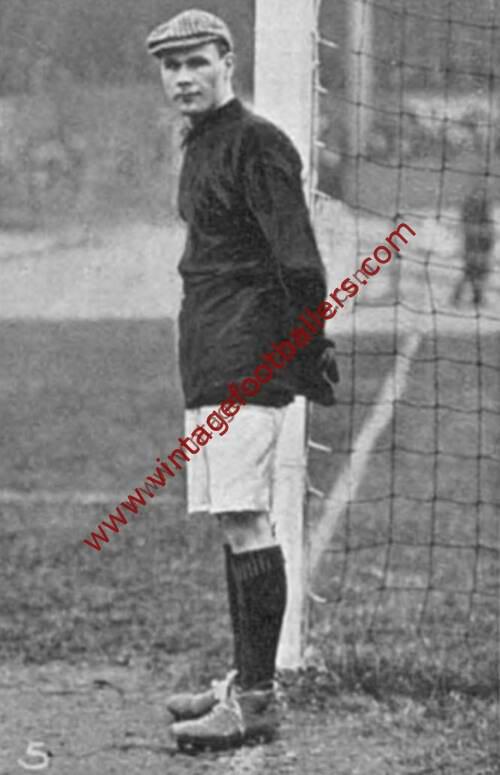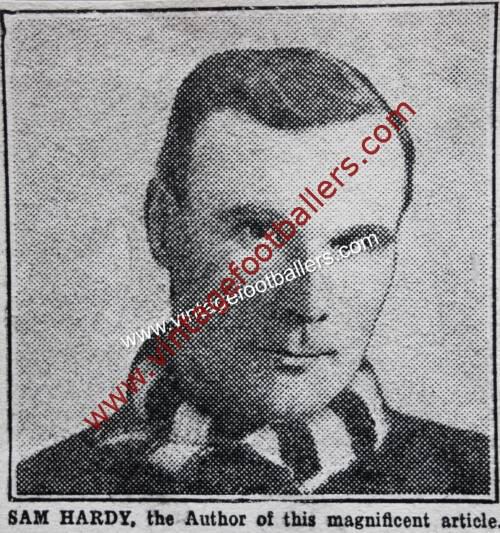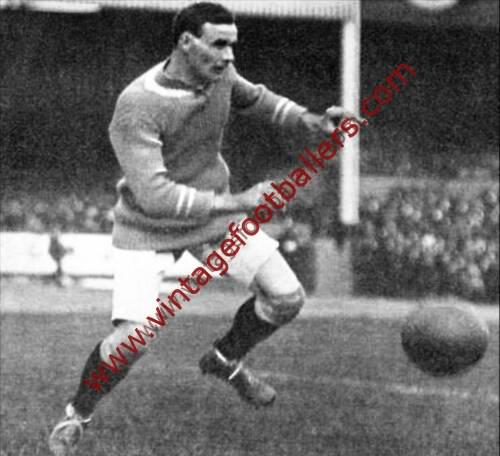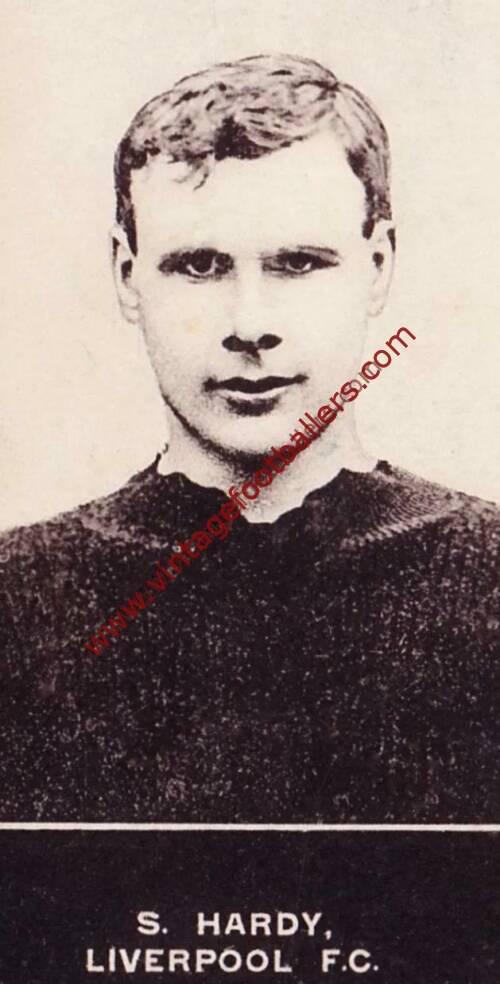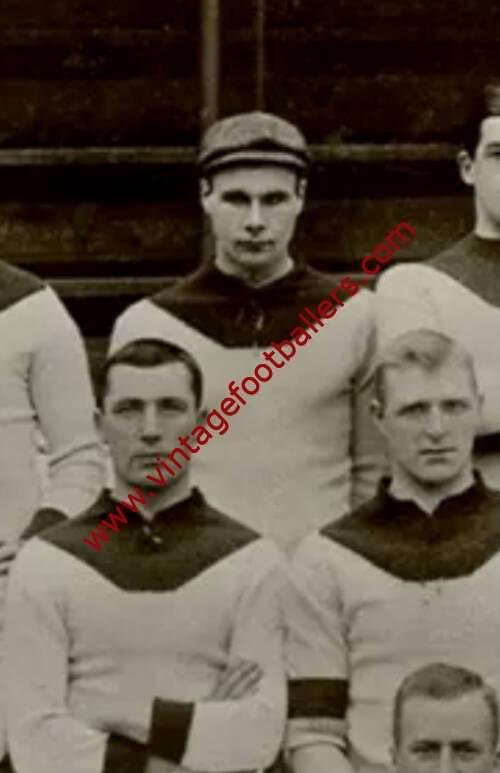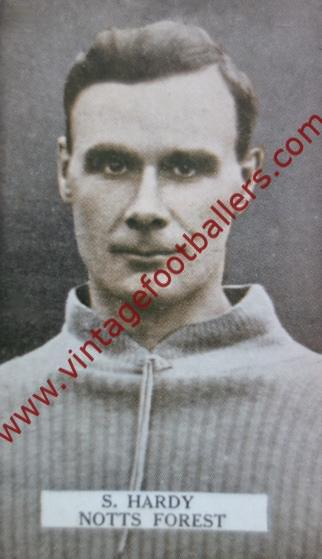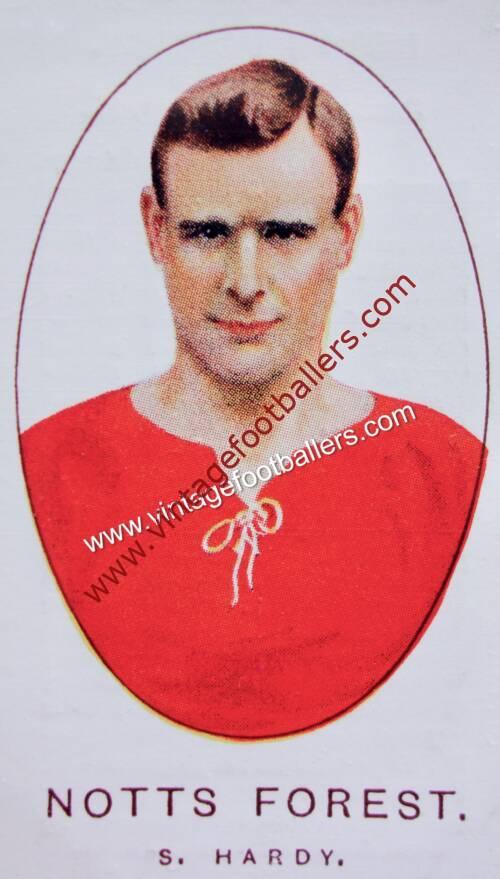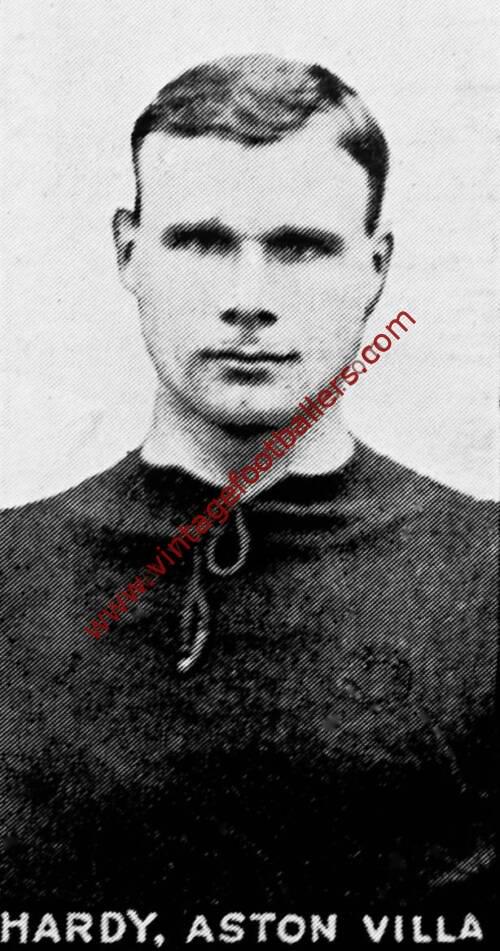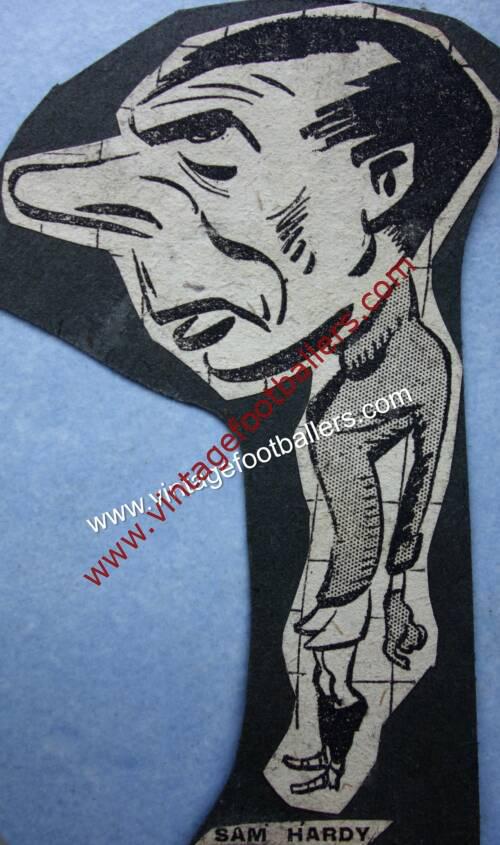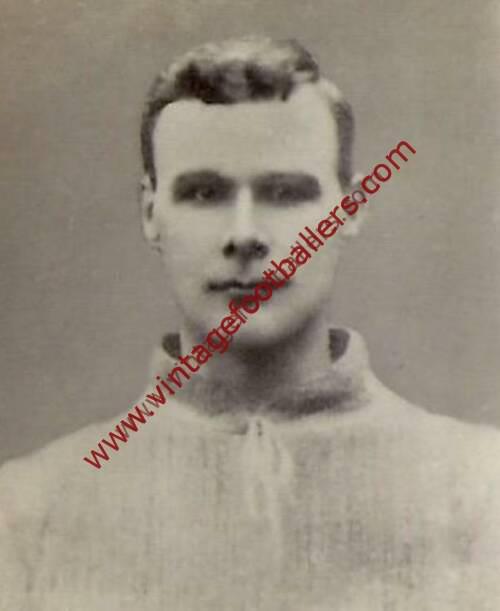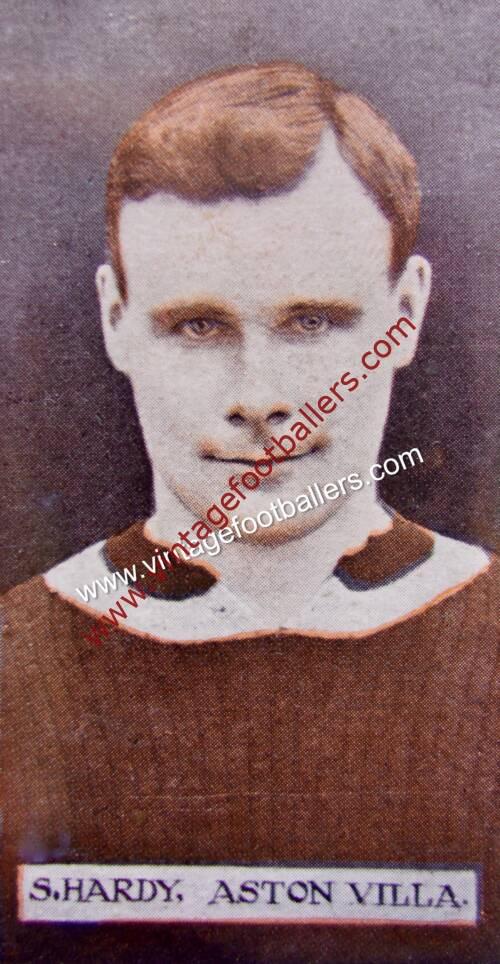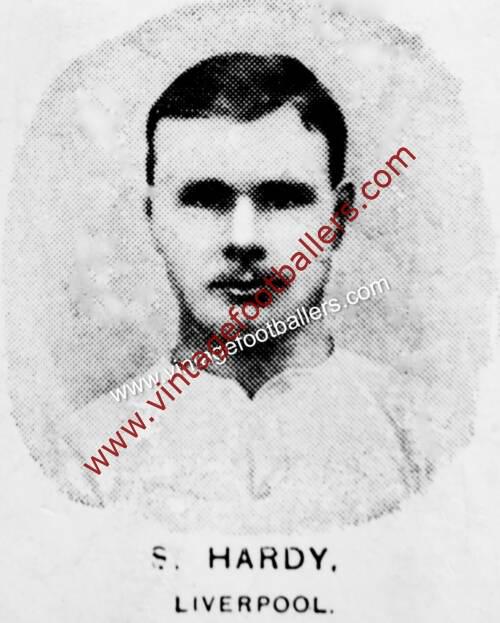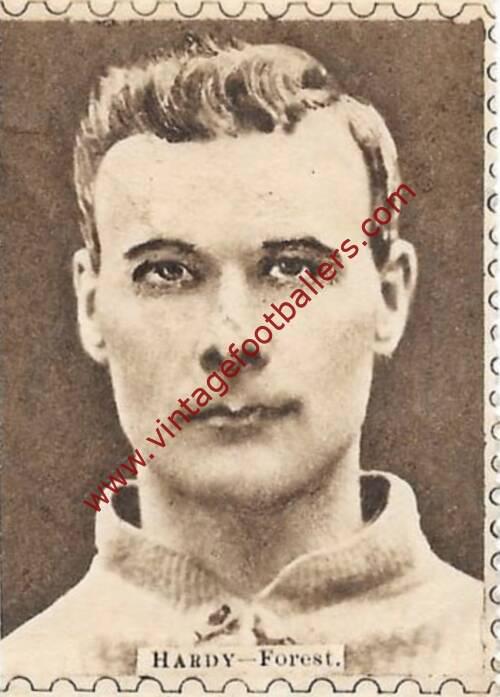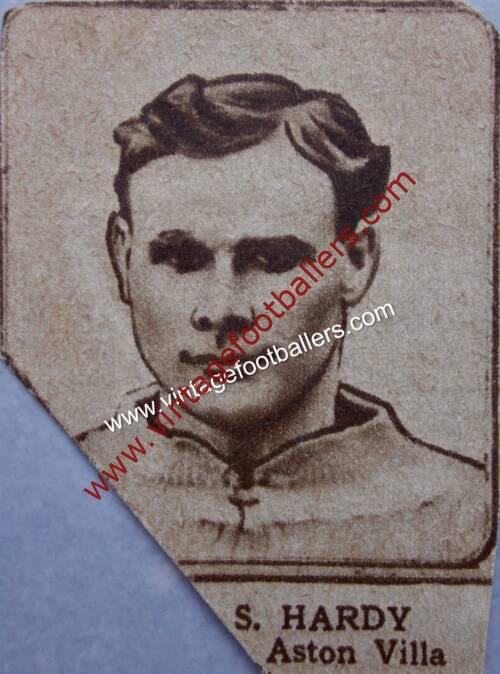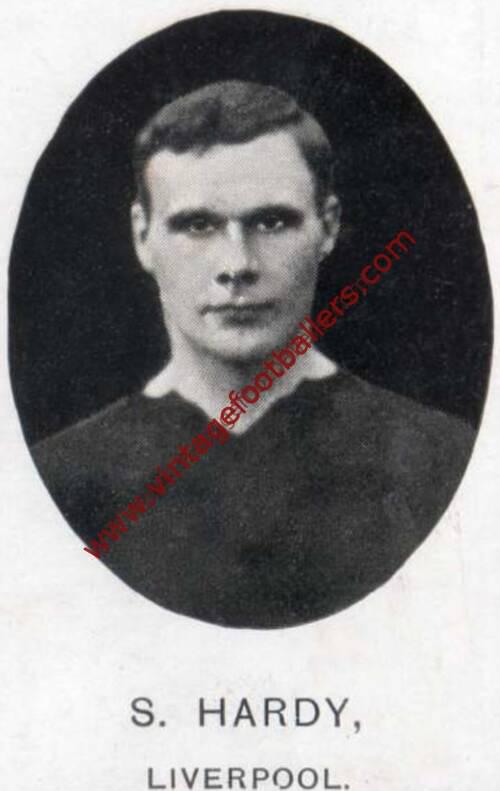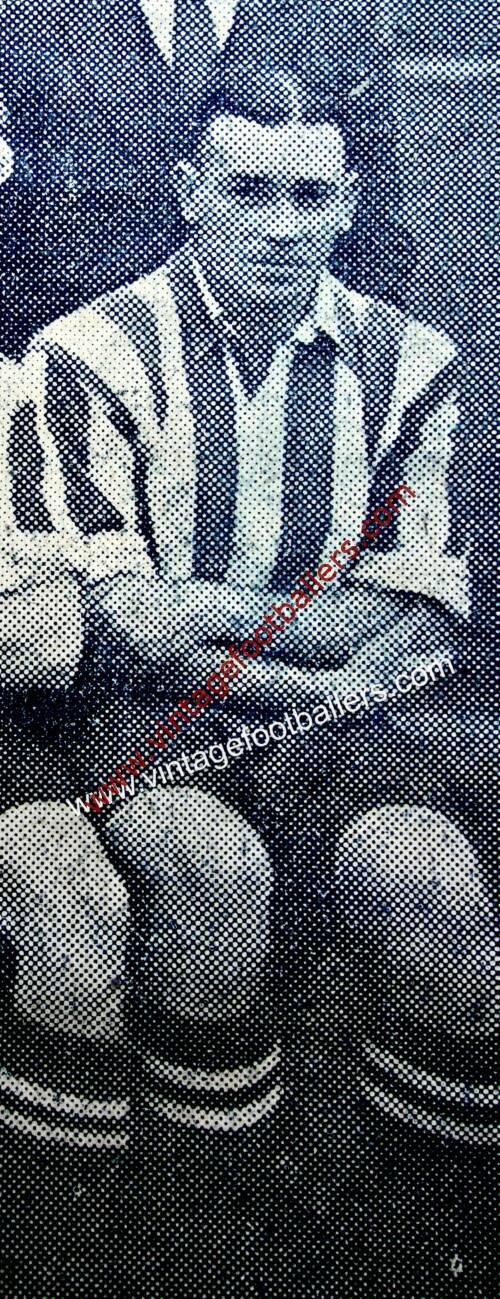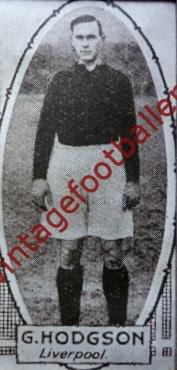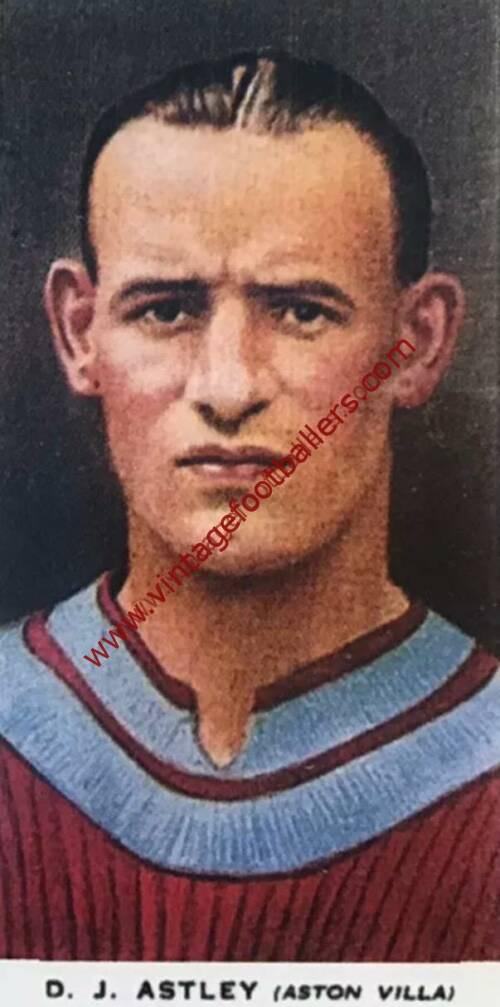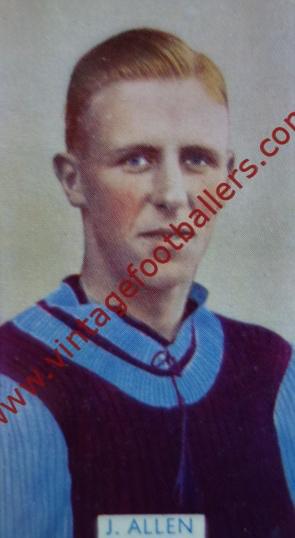Please choose your photo size from the drop down menu below.
If you wish your photo to be framed please select Yes.
Note: 16″x 20″not available in a frame.
Images can also be added to accessories. To order please follow these links
£8.95 – £49.95
Please choose your photo size from the drop down menu below.
If you wish your photo to be framed please select Yes.
Note: 16″x 20″not available in a frame.
Images can also be added to accessories. To order please follow these links
Newbold, Chesterfield born goalkeeper Sam Hardy first came to Second Division Chesterfield’s attention as a member of the Newbold White Star side that beat their reserves in the 1902 Byron Cup Final, having joined them the year before. Legend has it that, when manager Jack Hoskin was tipped off about Derby’s reported interest in him, he rushed to sign Hardy, finally getting the his signature under a lamp post in Newbold, but not until Hardy had forced Hoskin to increase his offer of five shillings (25p) a week to eighteen shillings (90p). He made his Football League debut at Woolwich Arsenal in April 1903 and thereafter spent two seasons as The Spireites’ undisputed number one. His on-field performances reflected his character off it, for he was an even tempered, down to earth man. Considering his great talents it was only a matter of time before he moved to a bigger club. Liverpool put six past Sam Hardy while he was in goal for Chesterfield in January 1905, but remembered that, but for Hardy, it would have been closer to twenty on the day. Accordingly, four months later the Reds came in with an offer of £300 plus a friendly, and the 22 year-old Hardy was on his way to greatness after keeping 30 clean sheets in 71 League appearances for Chesterfield, also playing 6 FA Cup ties for them. The friendly never took place, and Liverpool topped the fee up with another £40.
Hardy replaced Ned Doig, who had been the club’s main ‘keeper for the opening eight fixtures of the 1905-06 season. Liverpool had been struggling for consistency until that point, but Hardy’s debut saw Nottingham Forest beaten 4-1 and The Reds went on a terrific run, beating Middlesbrough 5-1, conquering Champions Newcastle at St James’ Park 3-2 and first-placed Aston Villa were buried 3-0 at Anfield, Hardy saving a penalty from Billy Garratty. After only four games for the first team the joint Everton/Liverpool programme afforded Hardy the following praise: “Judging from the cool, yet effective, methods which he adopts in clearing his goal, we feel pretty well assured in prognosticating a successful future for this young player. He is fearless in stopping a rush, and remarkably agile in covering the goal space, and is equally at home with both high and low shots. When his first grueling afternoon comes, we trust Hardy will show himself a master of his craft.” After winning nine out of ten games, Liverpool were top of the table at Christmas, one point ahead of Aston Villa and with a game in hand. Hardy and his strong defence keeping four clean sheets. Liverpool didn’t falter and finished four points ahead of Preston. Liverpool had won the League Championship for the second time in Hardy’s first season.
In total Hardy kept goal for Liverpool for seven seasons, and although further club success eluded him, the closest being their runners up position in the League Championship in 1909-10, “Safe and Steady Sam” was soon recognised as one of the outstanding English goalkeepers of his time. He made his England debut in February 1907, keeping a clean sheet in a win over Ireland at Goodison Park. He went on to make 21 England appearances between 1907 and 1920, at a time when England usually played only three games a season and the nation went to War for four years. Any keeper enjoying a fourteen year spell as his country’s first choice in the modern era would have earned around 140 caps, knocking Peter Shilton’s record easily of its perch. Hardy won his last and twenty first international cap for England against Scotland on 10th April 1920. England beat the Scots 5-4. He also played in 3 Victory Internationals and represented The Football League on ten occasions between February 1908 and March 1920.
On 17th April 1911 Hardy got his much deserved benefit game when Liverpool faced Woolwich Arsenal at Anfield. The club and the Anfield crowd showed Hardy their appreciation: “Twenty thousand throats cheering the silent custodian to the echo. The band departed decorously, and the rival captains took the centre, Hardy proving fortunate with the coin, at which the generous crowd cheered again.” Hardy was firmly first choice at Anfield for seven years until the 30-year-old was replaced by Scotsman Ken Campbell, ten years his junior, at the end of the 1911-12 season, having made 240 appearances.
Incidentally Hardy’s last game for Liverpool was on 6th April 1912 against Aston Villa. Campbell’s success and Hardy’s refusal to move to the City of Liverpool signalled the end of his Reds’ career. Two months later he joined The Villains who paid £1,500 to Liverpool for his signature. Following his move Liverpool’s board said they “were going to insist in future that their players should reside in the district.” As in his debut season at Liverpool, Hardy was victorious in his first season with Villa. Villa beat Sunderland 1-0 in the 1913 FA Cup Final. Villa also finished four points behind Sunderland in second place in the League Championship. The following season Hardy suffered FA Cup heartache at the hands of his former team. Villa played Liverpool in the 1914 semi-final and Jimmy Nicholl scored two goals past Hardy at White Hart Lane. Liverpool lost the Final 1-0 to Burnley.
Like so many other professionals, his career was interrupted by the outbreak of the First World War. He served in the Royal Navy and on two occasions narrowly escaped serious injury. Hardy kept his eye in during the conflict playing for his own club, Aston Villa, and for Plymouth Argyle, Nottingham Forest and the Royal Naval Barracks, Plymouth. Hardy returned to Villa Park after the War and won a second FA Cup winners’ medal in 1920, when Villa beat Huddersfield Town 1-0 in the Final at Stamford Bridge, but a year later he was on the move again after 183 games for The Villains.
In 1921 he took over the pub Gardener’s Arms on Glumangate in Chesterfield. His return to the town fuelled fierce speculation that Chesterfield were going to sign him for their impending return to the Football League, but Villa, who had upset the player by insisting that he travel every day to Birmingham to train, were not taken in by Chesterfield’s suggestion that a free transfer might be a fitting reward for his services. Villa got £1,000 from Nottingham Forest for him as the season started which was a gamble considering Hardy was a few days short of his 39th birthday.
Of course, his record of first season success continued as Hardy became a key member of Forest’s team, helping them to promotion to the First Division as they won the Second Division Championship. With Albert Iremonger still turning out for near neighbours Notts County on a regular basis and only two years his junior, Nottingham really was the city for the veteran goalkeeper!! Hardy paid scrupulous attention to his fitness which allowed him to keep playing in the top flight until just before his 43rd birthday, in an era when most players were clapped out at thirty. Hardy played 109 games for Forest before retiring in May 1925. He played 609 club matches in 22 years and would have played many more if the First World War had not intervened.
“Hardy, I consider the finest goalkeeper I played against. By uncanny anticipation and wonderful positional sense he seemed to act like a magnet to the ball. I never saw him dive full length to make a save. He advanced a yard or two and so narrowed the shooting angle that forwards usually sent the ball straight at him.” Legendary player and later co-founder of the Football Writers’ Association, Charlie Buchan, had plenty of praise for Hardy’s abilities. It’s hard to argue with that.
| Weight | N/A |
|---|
